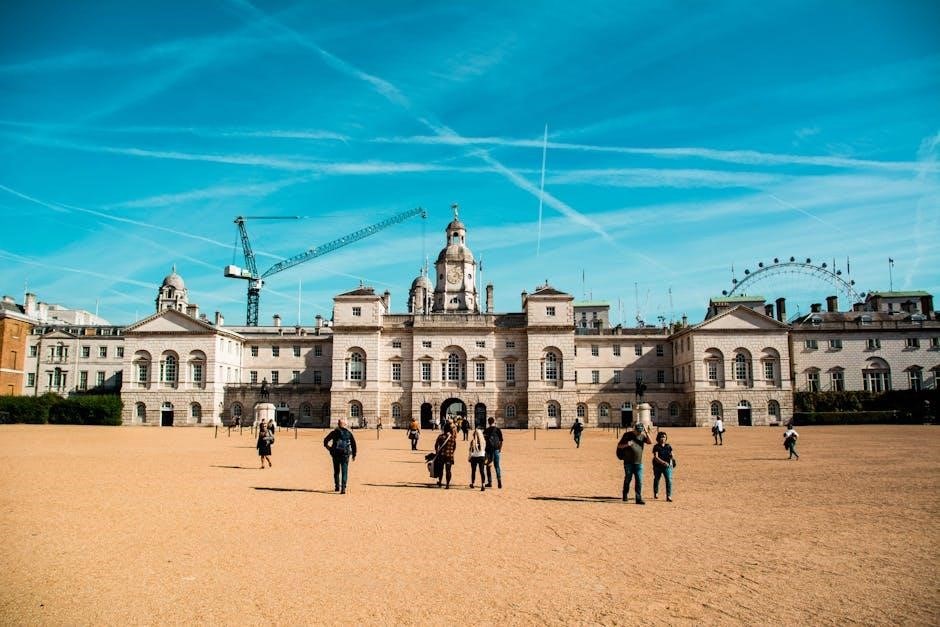Harlem is a cultural beacon, rich in African American history, art, and music. The Harlem Renaissance shaped its identity, fostering creativity and resilience. Explore its vibrant legacy on foot, discovering iconic landmarks, soulful eateries, and spiritual hubs that define this historic neighborhood.
Overview of Harlem’s Historical Importance
Harlem’s historical significance is deeply rooted in its role as a cultural and intellectual hub for African Americans. The Harlem Renaissance of the 1920s-30s transformed the neighborhood into a beacon of art, literature, and music, shaping Black identity. Its streets witnessed pivotal moments in the Civil Rights Movement, making it a symbol of resilience and activism. Today, Harlem’s rich legacy attracts visitors worldwide, offering a glimpse into its transformative past and vibrant present. Walking through its historic streets provides a profound connection to the struggles, triumphs, and creativity that define this iconic neighborhood.
The Role of Harlem in African American Culture
Harlem stands as the epicenter of African American culture, where art, music, and spirituality thrive. It nurtured luminaries like Langston Hughes and Zora Neale Hurston, birthing the Harlem Renaissance. The neighborhood’s churches, theaters, and eateries are living testimonials to its enduring influence. Walking through Harlem reveals a tapestry of Black identity, from the Apollo Theater’s legendary performances to soul food restaurants that embody culinary heritage. This cultural heartbeat continues to inspire and empower, making Harlem a vital symbol of African American pride and creativity.
Planning Your Self-Guided Walking Tour
Plan your Harlem walking tour with a self-guided itinerary, covering 1.5 miles in about 2 hours. Use maps or guides to navigate and enjoy the journey.
Best Time to Visit Harlem
The best time to explore Harlem is during spring (April–June) or fall (September–November), when the weather is mild and ideal for walking. Summer offers vibrant street festivals and outdoor concerts, while winters are cooler but festive, especially around the holidays. Plan your visit during daylight for a seamless experience, as evenings may offer fewer dining options. Check local event calendars to coincide your tour with cultural events or markets, enhancing your immersion in Harlem’s rich heritage; Wear comfortable shoes and stay hydrated for a enjoyable self-guided journey.
Essential Items to Bring Along
For a self-guided walking tour of Harlem, pack essentials like a map, comfortable walking shoes, and a reusable water bottle. Bring sunscreen, a hat, and sunglasses for outdoor exploration. A portable charger ensures your devices stay powered for photos and navigation. Carry a light jacket or umbrella, as weather can change. Snacks like granola bars or fruit will keep your energy up. A small first-aid kit and hand sanitizer are practical additions. Don’t forget a notebook and pen to jot down memories or recommendations. Be prepared to immerse yourself in Harlem’s vibrant culture with these must-haves for a seamless adventure.
Estimated Duration and Distance
A self-guided walking tour of Harlem typically lasts about 2 hours, covering approximately 1.5 miles (2.2 km). This distance is manageable at a leisurely pace, allowing time to explore landmarks, take photos, and soak in the atmosphere. The route is designed to be enjoyable without rushing, ensuring you can appreciate the neighborhood’s cultural and historical highlights. Plan your day accordingly, as this duration provides a comprehensive yet relaxed experience of Harlem’s iconic sites and hidden gems.
Key Landmarks to Explore
Harlem’s landmarks include the Apollo Theater, Abyssinian Baptist Church, and the Harlem Walk of Fame, each offering a glimpse into its rich cultural and historical tapestry.
The Apollo Theater: A Historic Entertainment Venue
The Apollo Theater is a cornerstone of Harlem’s cultural heritage, renowned for launching legendary careers like Aretha Franklin and James Brown. This iconic venue has hosted countless performances since 1934, becoming a symbol of African American excellence in music and entertainment. Visitors can take guided tours, exploring its rich history and significance. The Apollo’s legacy continues to inspire, making it a must-visit during any self-guided walking tour of Harlem.
Abyssinian Baptist Church: A Spiritual Landmark
Abyssinian Baptist Church, founded in 1808, stands as a pivotal spiritual and cultural landmark in Harlem. Known for its stunning Gothic Revival architecture, the church has played a central role in the African American community, fostering Civil Rights movements and nurturing faith. Its historic significance and vibrant congregation make it a compelling stop on any self-guided walking tour, offering a glimpse into Harlem’s enduring spiritual heritage and its impact on social justice and community empowerment over the centuries.
Harlem Walk of Fame: Honoring Cultural Icons
The Harlem Walk of Fame celebrates the legacies of African American icons who shaped culture, music, and history. Located along 125th Street, the walk features plaques dedicated to legends like Aretha Franklin, Malcolm X, and Langston Hughes. This tribute highlights Harlem’s profound impact on the arts and social justice. Visitors can stroll through the area, reflecting on the contributions of these trailblazers. The walk not only honors their achievements but also serves as a reminder of Harlem’s enduring influence on American culture, making it a poignant stop on any self-guided tour.
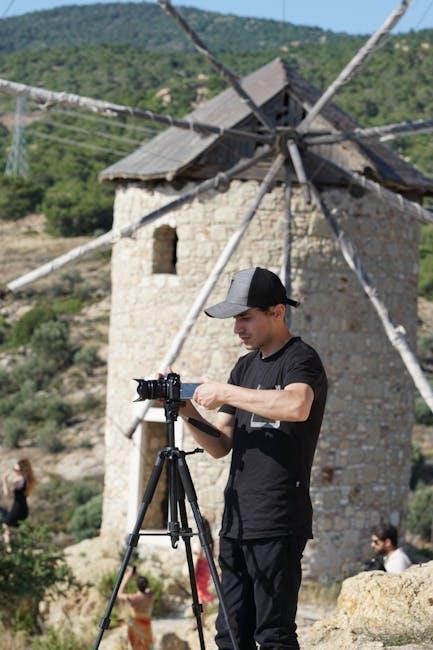
Cultural Institutions to Visit
Harlem is home to renowned cultural institutions like The Studio Museum, Schomburg Center, and Harlem Arts Alliance. These spaces celebrate Black art, history, and creativity, offering enriching experiences for visitors on a self-guided tour.
The Studio Museum in Harlem: Celebrating Black Art
The Studio Museum in Harlem is a cornerstone of African American art and culture. Founded in 1968, it is dedicated to showcasing works by Black artists, both established and emerging. The museum’s permanent collection and rotating exhibitions highlight the richness of Black artistic expression. Visitors can explore a wide range of media, from paintings to installations, that reflect the diverse experiences of African diasporic communities. The museum also offers educational programs and events, making it a vibrant hub for learning and creativity. Its role in fostering innovation and preserving cultural heritage makes it a must-visit on any Harlem walking tour.
Schomburg Center for Research in Black Culture
The Schomburg Center for Research in Black Culture is a renowned institution dedicated to preserving and promoting the history and contributions of African diasporic communities. Located in Harlem, it houses vast archives, rare manuscripts, and artifacts that chronicle Black experiences worldwide. Visitors can explore exhibitions, attend lectures, and engage with cultural programs that celebrate Black heritage. As a vital resource for scholars and the public alike, the Schomburg Center offers insights into the rich tapestry of Black culture, making it an essential stop on any self-guided tour of Harlem.
Harlem Arts Alliance: Supporting Local Artists
The Harlem Arts Alliance is a vital organization dedicated to nurturing and showcasing the work of local artists. By providing exhibitions, workshops, and community programs, it fosters creativity and preserves Harlem’s vibrant cultural heritage. Visitors on a self-guided tour can explore galleries and public art installations supported by the Alliance, gaining insights into the neighborhood’s thriving arts scene. This collective effort not only celebrates individual talent but also strengthens Harlem’s reputation as a hub for artistic expression and innovation, making it a must-visit destination for art enthusiasts.

Famous Dining Spots in Harlem
Harlem’s culinary scene is renowned for iconic spots like Sylvia’s Restaurant, Red Rooster Harlem, and Harlem Public. These eateries offer soul food, modern twists, and craft beer, showcasing Harlem’s rich flavors and cultural heritage.
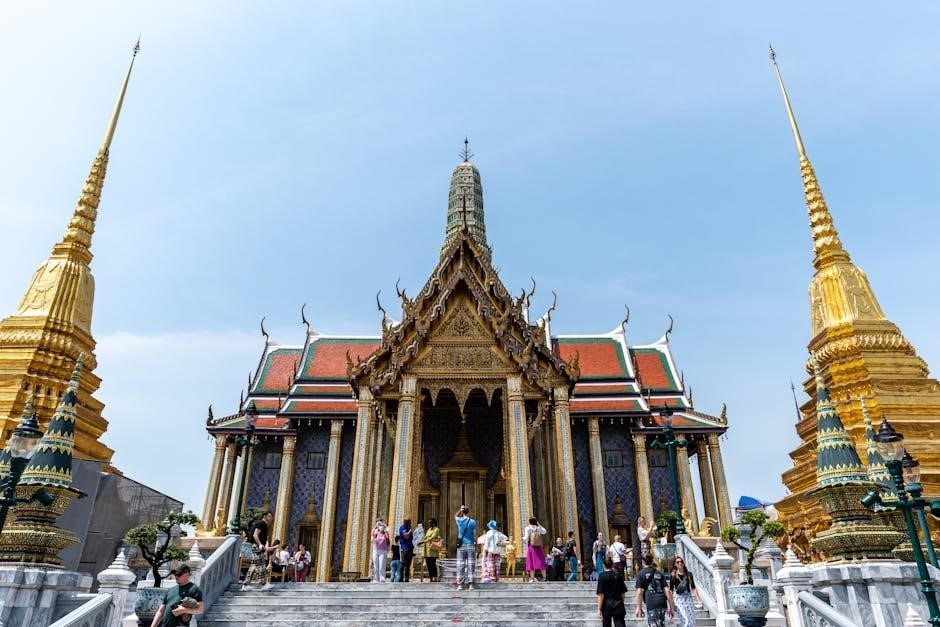
Sylvia’s Restaurant: A Soul Food Icon
Sylvia’s Restaurant is a landmark in Harlem, celebrated for its authentic soul food since 1962. Known as the “Queen of Soul Food,” it offers classic dishes like fried chicken, collard greens, and mac and cheese. This beloved eatery has hosted countless celebrities and remains a must-visit for both locals and tourists. Located on Lenox Avenue, Sylvia’s is not just a dining spot but a cultural institution, preserving Harlem’s culinary traditions. Its warm, inviting atmosphere makes it a perfect stop during your self-guided walking tour to experience the rich flavors of Harlem’s heritage.
Red Rooster Harlem: Modern Twist on Soul Food
Red Rooster Harlem, co-founded by renowned chef Marcus Samuelsson, offers a contemporary take on traditional soul food. Located on Malcolm X Boulevard, this vibrant restaurant blends classic Southern flavors with global twists. The menu features iconic dishes like fried yardbird, helga’s meatballs, and creative cocktails. Its lively atmosphere, complete with art-adorned walls, makes it a hotspot for both locals and visitors. Whether you’re enjoying a hearty brunch or a lively dinner, Red Rooster Harlem is a must-visit to experience the evolution of soul food in a modern, dynamic setting during your self-guided tour.
Harlem Public: A Local Favorite for Craft Beer and Food
Harlem Public, situated on Lenox Avenue, is a beloved spot for craft beer enthusiasts and food lovers alike. This cozy gastropub offers a rotating selection of local and regional brews, paired with a menu of seasonal small plates and classic comfort food. Its inviting atmosphere, complete with exposed brick walls and a warm decor, makes it an ideal stop during your self-guided walking tour. Whether you’re sampling a flight of beers or savoring a delicious meal, Harlem Public provides a welcoming space to relax and enjoy the flavors of Harlem.
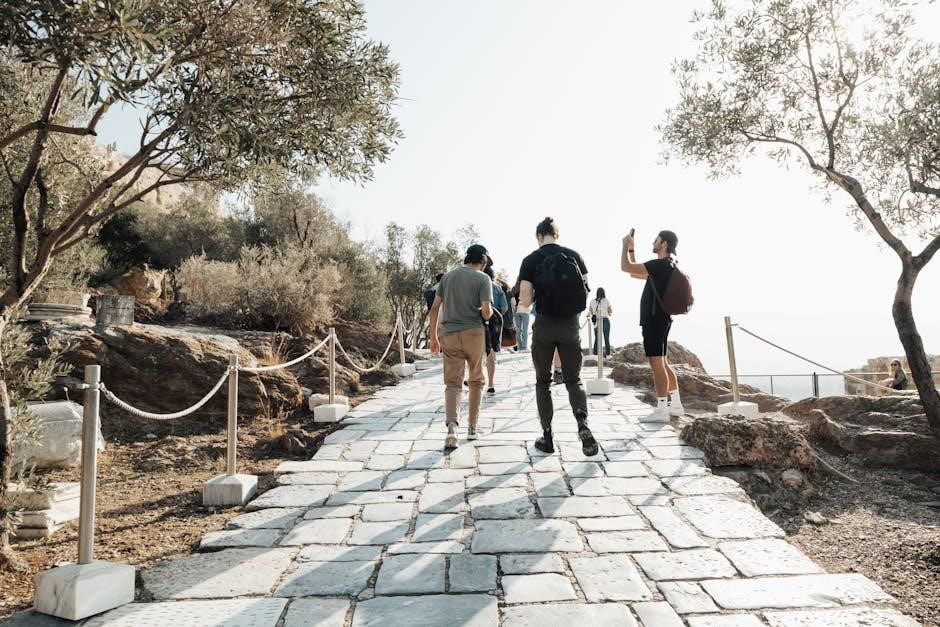
Historical Sites
Harlem’s historical sites embody its rich cultural heritage, offering a glimpse into its transformative past. Explore landmarks that highlight the neighborhood’s journey through time and legacy.
Harlem Renaissance Homes and Landmarks
Discover the historic homes and landmarks that shaped the Harlem Renaissance, a cultural movement that defined African American art, literature, and identity in the 1920s and 1930s. Walk past the residences of legendary figures like Langston Hughes and Zora Neale Hurston, where creativity and innovation thrived. Explore the Schomburg Center for Research in Black Culture, a treasure trove of historical archives and artifacts. These landmarks reflect the vibrant spirit of a bygone era, offering a deeper understanding of Harlem’s transformative impact on American culture.
Stroll through the neighborhood and admire the architectural charm of these historic sites, which continue to inspire visitors today. Each landmark tells a story of resilience, creativity, and community, making your self-guided walking tour an enriching and unforgettable experience.
Marcus Garvey Park: A Hub of Community and History
Marcus Garvey Park, a 20-acre green space in the heart of Harlem, is a vibrant hub of community and history. Named after the influential Black leader Marcus Garvey, the park reflects the neighborhood’s rich cultural heritage. It hosts various events, from concerts to cultural festivals, showcasing Harlem’s spirit. The park’s iconic watchtower and amphitheater are landmarks that draw visitors and locals alike, offering a space for reflection and celebration.
As part of your self-guided walking tour, explore the park’s historical significance and its role in fostering community connections. It’s a must-visit spot to experience Harlem’s lively atmosphere and deep-rooted traditions.
Harlem Hellfighters Monument: Honoring WWII Heroes
The Harlem Hellfighters Monument pays tribute to the 369th Infantry Regiment, African American soldiers who served courageously in WWII. Known for their bravery, they broke racial barriers and earned esteemed recognition. Located in Harlem, the monument symbolizes their sacrifices and contributions to history. It stands as a poignant reminder of their legacy and the community’s pride. During your self-guided walking tour, visiting this monument offers a moment to reflect on their heroic journey and the enduring impact of their service.

Religious Sites
Harlem’s religious sites reflect its rich spiritual heritage, from historic churches like Abyssinian Baptist to the Islamic Cultural Center, showcasing diverse faiths and architectural beauty.
St. Philip’s Episcopal Church: A Historical Gem
St. Philip’s Episcopal Church is a cornerstone of Harlem’s spiritual and architectural landscape. Established in 1809, it stands as one of the oldest African American Episcopal churches in the U.S. The church’s Gothic-style design and stunning stained-glass windows are a testament to its historical significance. It has long served as a place of worship, community, and empowerment, playing a pivotal role in the Harlem Renaissance. Visitors can admire its beauty and reflect on its enduring impact on the neighborhood’s cultural fabric.
Greater Bethel Baptist Church: A Spiritual Cornerstone
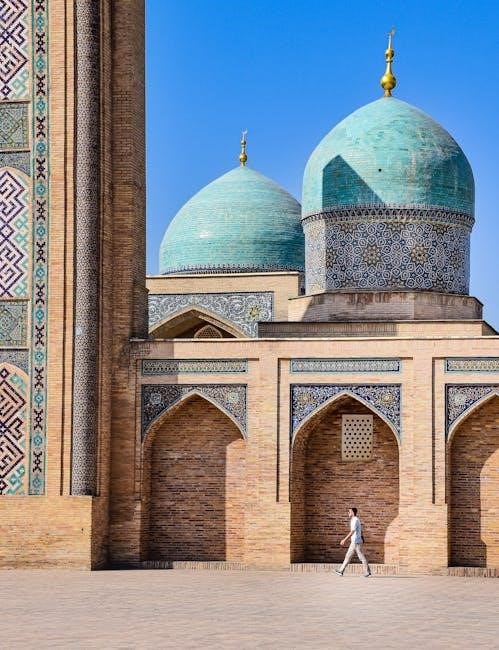
Greater Bethel Baptist Church is a revered institution in Harlem, serving as a spiritual and cultural anchor since its founding in 1921. Known for its powerful gospel music and vibrant community outreach, the church has played a significant role in the neighborhood’s religious and social life. Its striking architecture and welcoming atmosphere make it a must-visit for those exploring Harlem’s rich heritage. The church continues to be a beacon of hope and faith, reflecting the resilience and unity of the African American community.
Islamic Cultural Center of Harlem: A Symbol of Diversity
The Islamic Cultural Center of Harlem stands as a testament to the neighborhood’s diverse cultural tapestry. Established to serve the Muslim community, it also welcomes visitors from all backgrounds, fostering understanding and unity. The center hosts various cultural events, lectures, and workshops, showcasing the rich traditions of Islam. Its architecture blends seamlessly into Harlem’s historic landscape, while its mission reflects the neighborhood’s enduring spirit of inclusivity. As a hub for interfaith dialogue, it highlights Harlem’s role as a melting pot of cultures and beliefs, enriching the community’s vibrant identity.
Neighborhoods to Explore
Discover Central Harlem’s vibrant heart, West Harlem’s historic charm, and East Harlem’s diverse cultural scene. Each neighborhood offers unique insights into Harlem’s rich history and modern identity.
Central Harlem: The Heart of the Community
Central Harlem is the vibrant core of the neighborhood, offering a mix of historical landmarks, cultural institutions, and lively streets. Start your exploration here to immerse yourself in the area’s dynamic energy. Visit iconic spots like the Apollo Theater and Abyssinian Baptist Church, which are central to Harlem’s cultural identity. The area is also home to various soul food restaurants and boutique shops, making it a hub for both locals and visitors. Walking through Central Harlem provides a glimpse into its rich history and contemporary vitality.
West Harlem: A Mix of History and Modernity
West Harlem, also known as West Central Harlem, offers a unique blend of historical charm and modern vitality. This area is home to the Hudson River waterfront, where you can enjoy scenic views and stroll along the West Harlem Piers. Explore the historic row houses and newer developments that reflect the neighborhood’s evolution. Visit Riverside Park, a peaceful green space perfect for relaxation. The area also features vibrant street art and cultural spots, showcasing its dynamic mix of past and present. Walking through West Harlem provides a fascinating glimpse into its diverse history and contemporary life.
East Harlem: A Vibrant and Diverse Area
East Harlem, also known as El Barrio, is a vibrant and diverse neighborhood that reflects the cultural richness of Harlem. Known for its Latinx influence, the area is a melting pot of cultures, with a mix of Puerto Rican, Dominican, and other immigrant communities. Explore the colorful murals, lively music scenes, and authentic Latin cuisine. Visit El Museo del Barrio, which celebrates Latino and African American art. Stroll along 116th Street, a hub of activity filled with shops, restaurants, and cultural landmarks. East Harlem’s dynamic energy offers a unique experience, blending tradition with modern urban life in a walkable and engaging environment.
Safety Tips for Walking in Harlem
Stay alert, avoid distractions, and keep valuables secure. Respect local customs and traditions. Be mindful of pedestrian traffic and follow local guidelines for a safe experience.
Staying Aware of Your Surroundings
While exploring Harlem, stay attentive to your environment. Keep an eye on your belongings, especially in crowded areas. Be cautious of pedestrian traffic and avoid distractions like using your phone in busy spots. Trust your instincts and steer clear of any situations that feel uncomfortable. Familiarize yourself with local maps or guides to navigate smoothly. By staying vigilant, you can enjoy a safe and enriching experience discovering Harlem’s rich cultural heritage and vibrant neighborhoods.
Respecting Local Customs and Traditions
Respecting Harlem’s cultural heritage is essential during your self-guided tour. Dress modestly when visiting churches or attending gospel services, as these are sacred spaces. Be mindful of photography permissions, especially in sensitive areas. Engage respectfully with local vendors and residents, acknowledging the neighborhood’s rich history. Avoid disruptive behavior and follow posted rules at historical sites. By showing respect, you honor the community and contribute to a positive experience for both visitors and locals alike. Harlem’s traditions are deeply rooted, and thoughtful behavior ensures a meaningful connection to its cultural legacy.
Emergency Contacts and Resources
For emergencies in Harlem, dial 911 for police, fire, or medical services. The NYPD’s non-emergency number is 311. Harlem Hospital (506 Lenox Ave) is the nearest medical facility. Carry a map or use GPS for navigation. Consider programming local emergency contacts into your phone. Additionally, the Harlem Visitor Center offers assistance with directions and information. Stay informed and prepared to ensure a safe and enjoyable tour. Knowing these resources can provide peace of mind while exploring the neighborhood’s cultural and historical sites.
Harlem’s cultural richness and historical depth leave a lasting impression. A self-guided walking tour offers a unique way to connect with its vibrant streets, timeless legacy, and hidden treasures.
Final Thoughts on Exploring Harlem
Exploring Harlem through a self-guided walking tour is a rewarding journey into the heart of African American culture. The neighborhood’s rich history, vibrant art scene, and iconic landmarks offer a deeper understanding of its significance. From the Apollo Theater to soul food restaurants, every step reveals a story. Embrace the community’s warmth and resilience, and take time to reflect on the legacy of the Harlem Renaissance. Whether you’re a history enthusiast or a food lover, this tour leaves a lasting impression, inviting you to return and uncover more of Harlem’s hidden treasures.
Encouragement to Discover More of Harlem’s Hidden Gems
Harlem is a treasure trove of cultural richness, waiting to be explored beyond its iconic landmarks. Venture into lesser-known spots, such as local art galleries, family-owned eateries, and independent bookstores, to experience the authentic heartbeat of the community. Discover hidden murals, intimate jazz performances, and quaint shops that reflect the neighborhood’s soul. By wandering off the beaten path, you’ll uncover the unique charm and resilience that make Harlem a vibrant and inspiring destination. Let curiosity guide you to the unexpected gems that only Harlem can offer.
